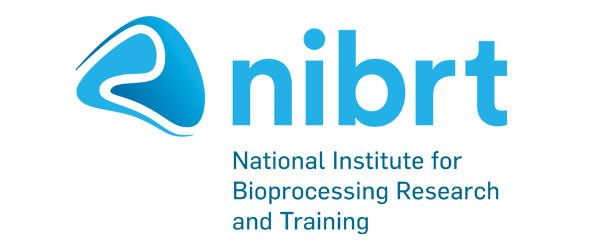Prof. Niall Barron: NIBRT Research Profile
03/11/2023
Prof Niall Barron is a Principal Investigator at NIBRT, the National Institute for Bioprocessing Research and Training, which provides training and research solutions to the biopharma manufacturing industry. He is also Professor of Biochemical Engineering in the School of Chemical and Bioprocess Engineering in UCD. His research interests focus on targeted genetic engineering strategies to improve or control the production of recombinant therapeutic proteins and other Biologics from cultured mammalian cell lines such as Chinese Hamster Ovary (CHO) cells.
In other words, Barron explains, his focus is on better ways to make advanced medicines. Protein-based medicines are much more complicated than small molecule medicines which are manufactured through synthesising chemical compounds, such as aspirin or paracetamol. Instead, scientists rely on living cells to produce proteins. A lot of the oncology and anti-inflammatory medicines developed over the last 20 to 30 years to target specific illnesses have been protein-based. A big advantage over small molecule medicines is that they often have fewer side-effects and better outcomes thanks to their targeted approach.
His research is concerned with “the bit in the middle of drug production where medicine needs to be manufactured in cells.” He compares it to the approach in a brewery, where they have giants vats filled with yeast, with alcohol and carbon dioxide as their by-products, the Biopharma industry uses big vessels containing CHO cells that produce medicines once they have been genetically modified to do so. He is interested in “the genetics and the manipulation of these cells to make them do that job more effectively.” Once the process is complete, the antibody medicine from those vessels is harvested, purified, and formulated so that it can be administered to patients.
Since 2017, Barron has been PI of the Cell Engineering Group in NIBRT. The group gives him, he enthuses, “the ability to dream something up yourself, to come up with ideas and test them out, assuming you can convince a funding agency or collaborator to support you. It’s a very intellectually stimulating and challenging job.” There is also a mix of teaching undergraduates and master students. He is frequently meeting new people because of NIBRT’s proximity to industry: industrial scientists visit to discuss different tactics or approaches to increase efficiency. There are also opportunities to travel to conferences “and see a bit of the world.”
As well as collaborating across academia and industry, the Cell Engineering Lab engages in cutting-edge research. Ireland is one of the top producers of complex medicine in the world, with many manufacturing sites of biopharmaceutical operations here. In just the last 4 or 5 years, there has been considerable focus on the clinical effectiveness and the commercial viability of a wave of advanced medicines, colloquially referred to as cell or gene therapy. “Here, you’re moving beyond proteins and monoclonal antibodies. With cell or gene therapy the concept is that, say in something like haemophilia where someone is missing a particular protein, which leads to issues with blood clotting, rather than dosing someone with a protein every so often, why not fix the gene that’s broken?”
NIBRT has become very involved in this new development because of the role it plays in attracting and supporting the biopharma industry to Ireland. Barron observes, “we felt it was compulsory that we started to pay attention to the manufacturing challenges around cell and gene therapy. It’s another order of magnitude more complex, because in many cases, you're talking about a living cell now being the drug product. And that creates, as you can imagine, its own challenges as well.”
“It’s been very difficult to change something in a living entity’s chromosomes or its genome in what we call a targeted manner,” he explains. The 4 bases that make up the genetic code (A, G, C and T) have to be in a particular order, just like a sentence, to create the correct instructions in a gene to make a particular protein. If there’s any spelling mistake, the genetic code doesn’t make sense and the protein won’t work. This mistake could be in among 3 billion bases, so “the great challenge since the beginning of modern genetics has been to be able to make that change in a very specific manner.” Recently a technique called base editing has been developed, much of it by David Liu and his colleagues in MIT. Now they can make very specific defined changes among this huge array of chromosomes.
For Barron’s Group, this gives them the ability to make very specific changes to the genome of CHO cells, to produce proteins more effectively. It may also lead to improvements in cell therapies such as CAR-T therapy, whereby T-cells are taken out of a leukaemia patient’s body and reprogrammed so they will recognise and kill cancer cells. They are then injected back into the patient. These treatments are not just really effective: in some cases they’re complete cures. Barron recalls the visit of Emily Whitehead, the first child to be treated with this therapy, who visited NIBRT last year: “it was a very inspirational day for researchers at NIBRT to meet her. She was treated for a form of leukaemia at eight years of age, and she had just had her eighteenth birthday when she came to to visit, having been cancer-free for many years.”
One of the challenges is that these life-saving treatments are often expensive. While Ireland has accomplished much in the field of gene therapies, often Irish patients have not been able to avail of them: “they had to travel to England to receive treatment. We’re finally getting to a stage where we’re doing it on the island, but it’s very expensive.”
The Cell Engineering Group is addressing these issues. Barron has a project with Irish company Avectas, which came out of Maynooth University. They have developed a medical device that increases the efficacy of delivering genetic material to T-cells from a patient. Two of his postdocs are working on that device to modify cells and further streamline the whole process. The ultimate goal is to drive the cost down.
In a typical week, then, his team could be working on a CHO protein project, or something related to cell therapy. They predominantly work in a wet lab, on living cells in various types of vessels and tubes, growing them in order to measure and manipulate their genetic properties with advanced analytical equipment. They also sit down to read the latest literature in order to put into context what they have observed and write up these observations for a thesis or publication.
Barron highlights the mentoring that takes place within the group: “Senior people in the lab mentor younger students coming in, teaching them the practical, day-to-day requirements of how to grow cells, move liquid from A to B without getting contamination. Generally, how to behave in a lab safely.” The younger scientists who come through the lab, he notes, go off to become successful within industry, or start their own lab groups, or work in different fields. “I’ve had postdocs that went to work for funding agencies such as SFI and different pharma companies. That’s satisfying as well.”
What is his advice for students interested in Biochemical Engineering? Barron points out that he wasn’t particularly interested in industry early in his own career: after a degree in Microbiology in Trinity he went to the University of Ulster to do a PhD in Applied Biotechnology, in the production of green fuels. This predated any serious concerns about climate change or alternative energy, so it wasn’t economically feasible to be competitive with very cheap oil.
He made the decision to switch to Biomedicine and went to Baylor College of Medicine in Houston, Texas, for a 3-year postdoc. He thinks that industry, particularly in Ireland, is a more viable choice now, with “more options out there now for younger people. Many of our undergraduate students are snapped up by the biopharma industry before they ever graduate.” He would also encourage any PhD student to travel if their circumstances allow and want to do so, as having the benefit of working in different labs with different bosses in different environments opens your eyes to other cultures.
Beyond this, he highlights the importance of being interested in science: “I’d say to anyone mulling over what to do after the Leaving Cert: choose something you enjoy. If you can get out of bed on a Monday morning in January and skip off to enjoy work, maybe not every time, but if you can do that most of the time, then you’re on to a winner.”
Prof. Niall Barron
Niall Barron has been NIBRT Principal Investigator and Professor of Biochemical Engineering in the School of Chemical and Bioprocess Engineering in UCD since 2017. His group focuses on targeted genetic engineering strategies to improve or control the production of recombinant therapeutic proteins from Chinese Hamster Ovary (CHO) cells. He is treasurer and executive committee member of ESACT, the European Society for Animal Cell Technology, and Senior Reviews Editor of the journal Biotechnology Letters. Previously he was the Centre Director of the National Institute for Cellular Biotechnology (NICB) in DCU.


